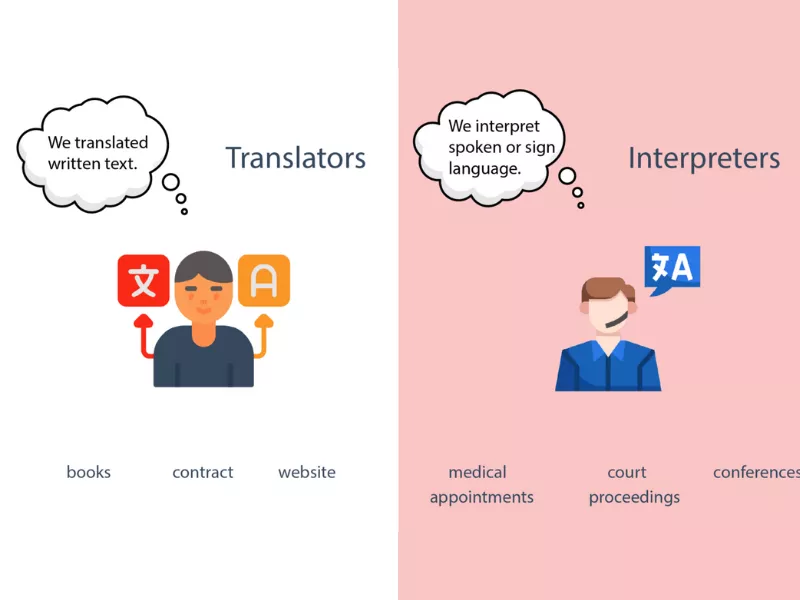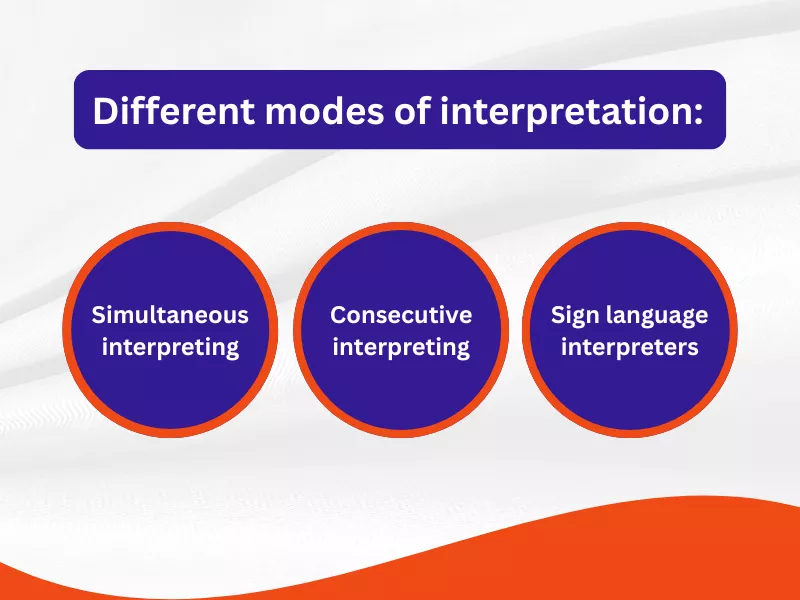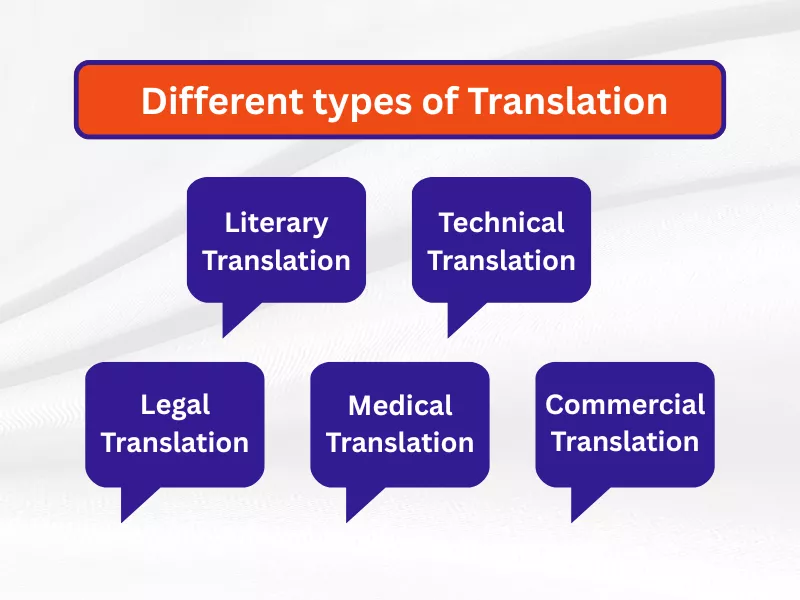The difference between a translator and an interpreter comes down to the medium they work with. A translator deals with the written word, while an interpreter handles spoken communication.
A translator’s job is all about working with documents. They are taking text from one language and turning it into another. Interpreters have a different workflow. They work in real-time with messages from the source language. Therefore, the main difference is the nature of the communication they exchange.
This blog will give you a clear image of a Translator vs Interpreter.
Table of Contents
ToggleWho Is a Translator and Interpreter?
A translator is a professional who works with Textual content. Their job is to convert text from a source language into a target language while preserving the original meaning, tone, and intent.
In contrast, an interpreter works with spoken language. They facilitate real-time verbal communication between speakers of diverse language, often in settings such as conferences, meetings, or medical appointments.
How Do Translators and Interpreters Work?

Understanding the difference between interpreting vs translating is essential for anyone working in language services. Both interpreter and a translator have a different role to play.
Interpreter
An interpreter translates spoken words or sign language in real time from one language to another. Interpreters must convey meaning instantly from one language into another, without the opportunity for revision. This makes interpreting a highly demanding skill that requires quick thinking, cultural awareness, and strong language proficiency.
Interpreters play a crucial role in international meetings, diplomatic events, courtrooms, and hospitals. For example, during a medical emergency, a medical interpreter may help a doctor communicate with a patient who speaks a different language, ensuring that accurate and potentially life-saving information is understood on both sides.
Interpreting services require a different skill set compared to translation. While both professions involve language conversion, interpretation happens immediately; therefore, interpreters must excel in listening, memory, and real-time speech delivery, often under pressure.
Translator
A professional translator works with written content, converting text from one language into another while preserving the original meaning, tone, and intent. Unlike interpreters, who deal with spoken communication, translator must focus solely on written materials such as documents, websites, reports, and more.
Translators often use specialized tools such as translation memory software and computer-aided translation (CAT) tools to ensure consistency, especially in large or technical projects. At our translation services in Australia, we pride ourselves on providing human-based translation only; no machine translation is used for standard documents. This ensures accuracy, cultural appropriateness, and professional quality.
For example, if you need an official birth certificate translated for immigration purposes, our certified translators can deliver a properly formatted, legally recognized translation that meets all required standards.
Both translation and interpreting serve the same core purpose: to bridge language gaps and facilitate clear communication. They do this by accurately conveying meaning between the source and target languages, helping people understand each other across linguistic and cultural divides.
What differences between interpretation and translation?
The main difference between translation and interpretation are:
| Aspect | Interpreter | Translator |
| Medium | Spoken or sign language | Written text |
| Timing | Real-time (immediate) | Delayed (time to research and revise) |
| Work Setting | Conferences, meetings, hospitals, courts | Documents, websites, books, legal papers |
| Skills Required | Excellent listening, memory, and quick thinking | Strong writing, grammar, and research skills |
| Use of Tools | Usually minimal (headsets, microphones) | Translation memory, CAT tools, dictionaries |
| Accuracy and Style | Focus on conveying meaning quickly and clearly | Focus on accuracy, tone, formatting, and consistency |
| Revision and Editing | No time for revision | Can revise and proofread |
| Example | Interpreting during a live UN conference | Translating a legal contract for immigration purposes |
What Are the Different Types of Interpretation and Translation?

In the interpreter vs translator, let us understand the different types of translating and interpreting roles.
There Are Different Modes of Interpretation:
- Simultaneous interpreting: Here, an interpreter listens to the original speech and conveys it in another language at the same time.
- Consecutive interpreting: In this type of interpretation, an interpreter renders the message into the native language of the target audience after the speaker pauses. It is used in legal proceedings or small group settings.
- Sign language interpreters: They work with sign language to bridge communication between deaf or hard-of-hearing individuals.
There Are Different Types of Interpretation:

- Literary Translation: The translation focuses on poems and plays. Here also, the translators work with the written words. Literary translation facilitates communication of cultural values, emotions, and artistic style.
- Technical Translation: It also focuses on written materials like manuals, scientific papers, and technical instructions. Terminology becomes a challenge here as he needs to manage specialized vocabulary in different languages.
- Legal Translation: The focus is upon contracts, patents, and status. Knowing legal terminology is vital here.
- Medical Translation: It focuses on clinical studies, pharmaceutical information, and healthcare documentation. Medical translation boosts the safe and effective use of medical knowledge.
- Commercial Translation: The commercial translation focuses on marketing materials.
Understanding Translation and Interpretation Services in Australia
In today’s multilingual world, interpreting and translating services play a vital role in helping individuals, businesses, and government bodies bridge language barriers. Whether you’re dealing with written materials from one language or spoken communication in real time, it’s important to explore the difference between the two professions to understand how they serve different needs.
When discussing translation vs interpretation, the biggest differences lie in the medium and process.
A translator works with written content, such as legal documents, websites, academic papers, and media materials. Their job is to translate written content from a source language to a target language, ensuring an accurate translation that captures the original meaning, tone, and context. Since translators have more time, they can perform in-depth research and use computer-aided tools—like translation memory software—to maintain consistency and improve efficiency throughout the translation process.
Whereas an interpreter handles spoken communication in real time. Interpreters are essential in situations such as medical appointments, court hearings, conferences, and community services, where immediate understanding is critical. Because there is no time for revision, they must rely on sharp listening, memory, and quick decision-making skills to transmit messages accurately and clearly.
Is It Possible to Work as an Interpreter and Translator Together?
Yes, in Australia, it’s quite common for language professionals to work as both interpreters and translators. Many individuals choose to offer dual services, translating written documents and providing live interpretation, either as freelancers or while working for government agencies, community organisations, or private companies.
Employers often seek professionals qualified to perform both roles, as this allows for greater flexibility in meeting the diverse needs of clients and communities, especially in multicultural settings.
NAATI Certification: Essential for Language Professionals
To work legally and professionally in either role in Australia, you’ll need certification from NAATI (National Accreditation Authority for Translators and Interpreters). NAATI is the national standards and certifying body for translators and interpreters in Australia. It ensures that practitioners have the necessary skills to deliver high-quality, ethical, and culturally sensitive language services.
Types of NAATI Certification:
NAATI offers several types of certifications, including:
| Certification Type | Description |
| Certified Translator | For professionals translating written documents into or from English. |
| Certified Provisional Interpreter | Entry-level interpreting, often used in community settings. |
| Certified Interpreter | For professional interpreters working in complex settings (e.g., legal, medical). |
| Certified Specialist Interpreter | For interpreters in specialised fields like health or law. |
| Certified Conference Interpreter | For high-level interpreting at international conferences and diplomatic events. |
| Recognised Practising | For languages with low demand or no certification testing; recognition, not certification. |
With the appropriate NAATI certification, you are eligible to work across various sectors, including healthcare, legal, education, social services, and more. This dual qualification significantly increases your employability and allows you to respond to both spoken and written communication needs.
Education Pathways
Many Australian universities and institutions offer Graduate Certificates, Diplomas, or Master’s degrees in Translation and Interpreting, often covering both disciplines. These programs are designed to prepare students to sit for NAATI certification exams and to take on a dual role in the workforce for various types of translations. With bilingual or multilingual skills in demand across Australia, such qualifications are a valuable asset.
Now, let’s check out the significant differences between interpretation and translations.
Why Choose Our Translators and Interpreters?
- We have NAATI Certified Translators.
- Get Certified Translation from us in 24 Hours.
- We have a transparent pricing approach that starts with just $69.
- Our translation is accepted by the Australian Government.
- We have an Australian Customer support team.
- We ensure confidentiality.
Conclusion
Both translators and interpreters are different. We need an interpreter if we need to communicate with a person who doesn’t speak the same language. On the other hand, we need a translator to reach our target audience from different backgrounds. Another difference is that a translator is needed in both written and verbal communication.
Frequently Asked Questions
What is translation and interpreting?
Translation needs strong writing skills in the target language and deep cultural understanding. They mainly work with written language. On the other hand, interpreting is an immediate transfer of something that has been written or signed,
What are the benefits of hiring professional translation services?
Professional translation services will give you high-quality, accurate, and culturally appropriate translations. In addition, it enhances the global market access, brand credibility, and communication.
What is the difference between translation and interpretation job?
Interpreting and translation job roles are entirely different. There are differences between these two. An interpreter may be required during live communication. Whereas a translator is required in any situation that requires bridging a language barrier. Hiring a professional translator or interpreter helps businesses overcome language barriers in global markets.
Is interpreting harder than translating?
Looking at translate vs interpret, interpreting tends to be more difficult because it combines language skill with fast decision-making under pressure. The main reason is that it has a real-time and high-pressure nature. Comparing the tasks of a translator interpreter, translating allows more time for review, whereas interpreting requires fast, on-the-spot decision-making.
- Economic Diversity in Australia: Current Trends and Future Outlook - November 12, 2025
- What Is Machine Translation? History, Methods & Use cases - October 16, 2025
- Translator vs Interpreter: How Do They Differ? - October 10, 2025





